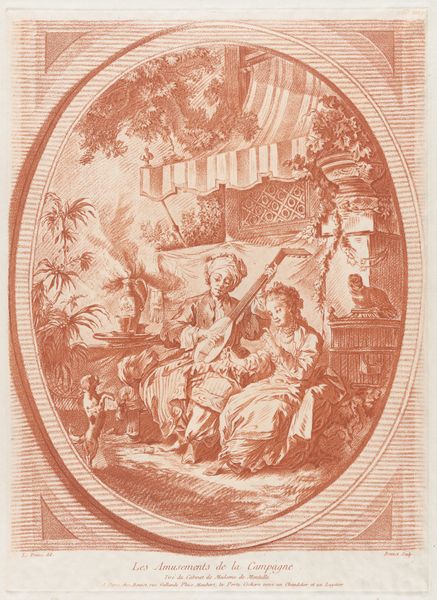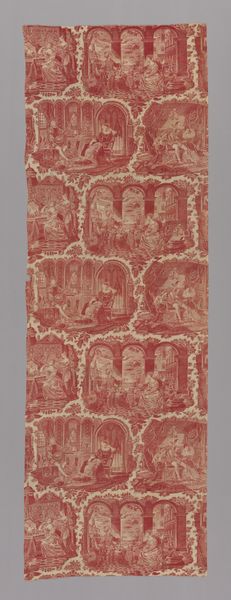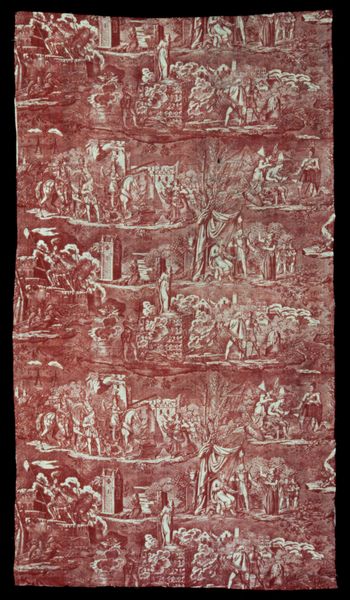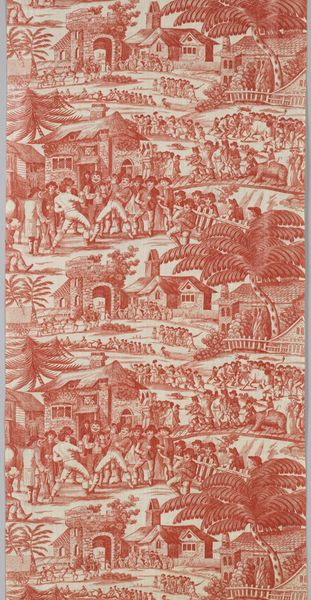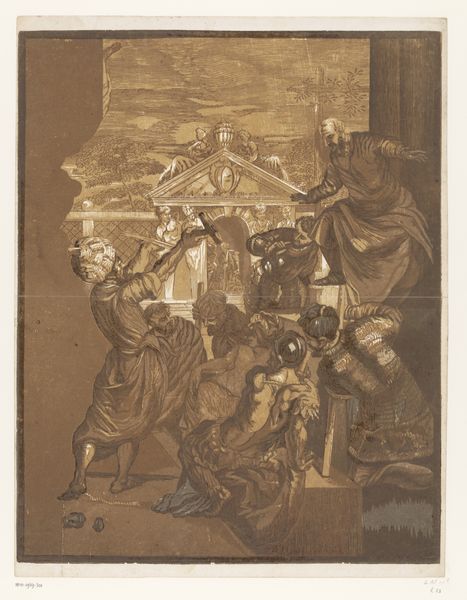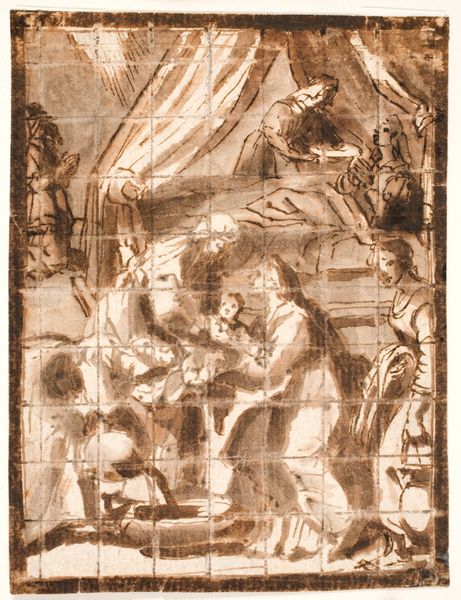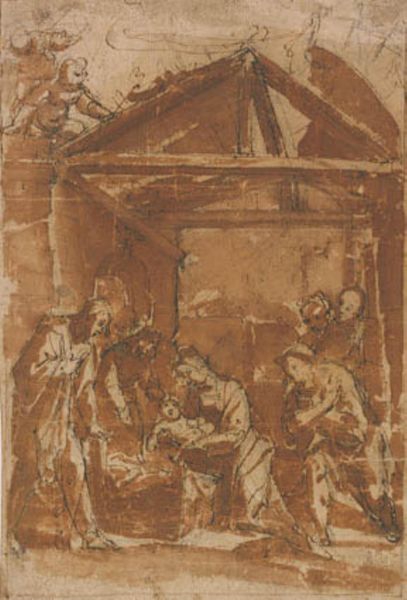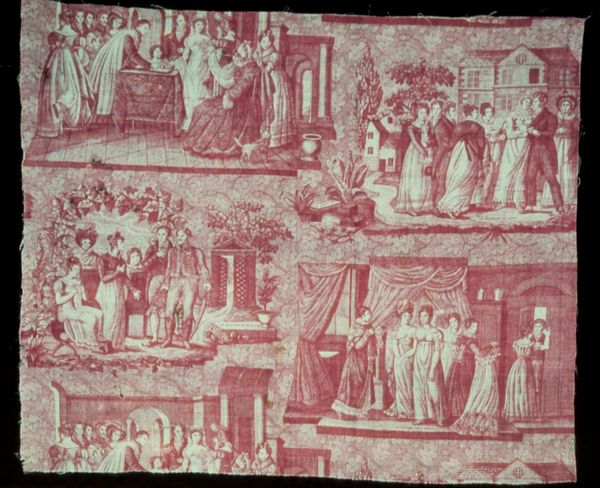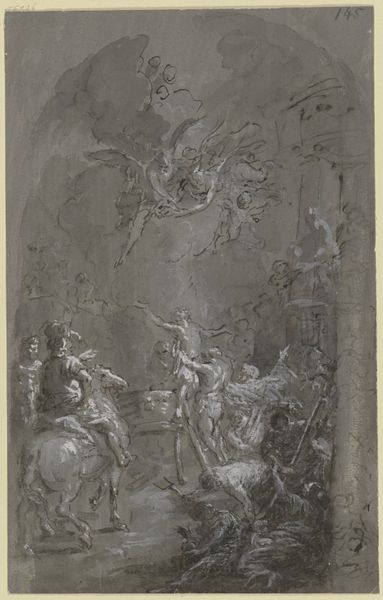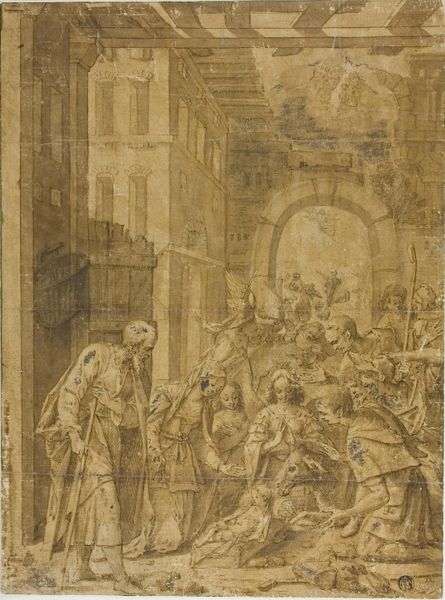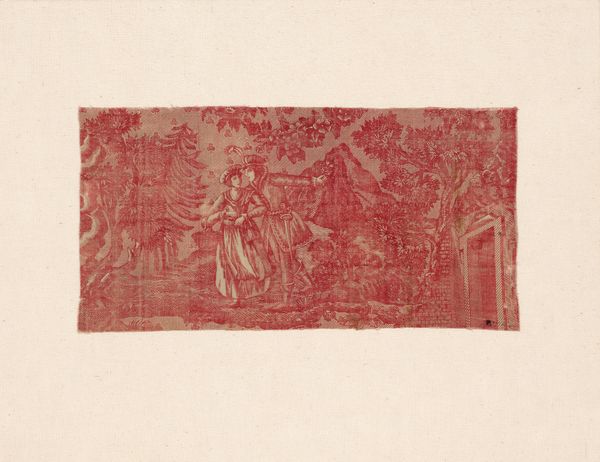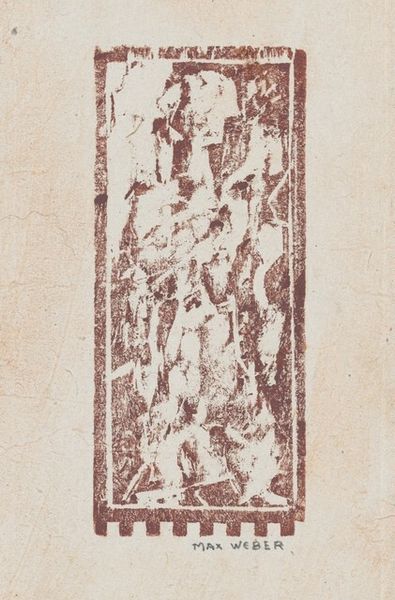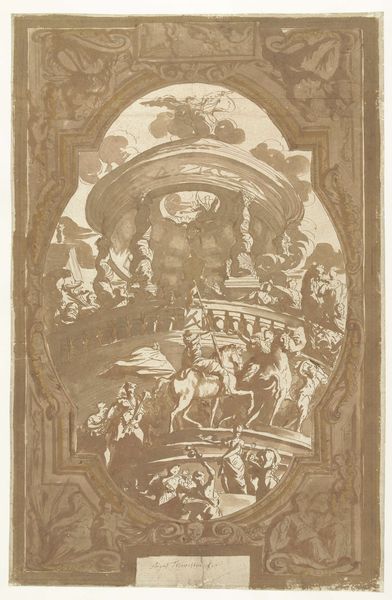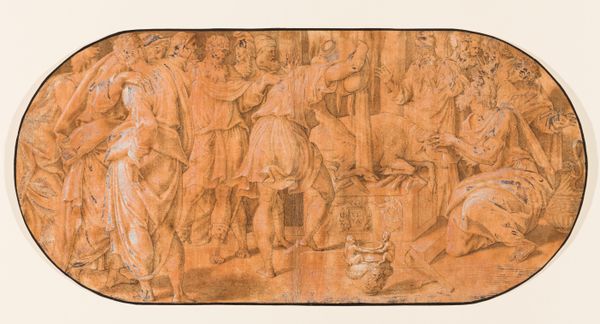
panel, print, textile, cotton
#
panel
# print
#
pattern
#
textile
#
romanticism
#
cityscape
#
cotton
#
genre-painting
Dimensions: 26 x 11 in. (66.04 x 27.94 cm)
Copyright: Public Domain
Editor: This is a 19th-century cotton textile panel from an anonymous creator. I’m struck by how these little scenes, printed in what looks like a faded red, depict cityscapes and figures in some sort of historical drama. How do we look at a piece like this? Curator: I see a direct reflection of the burgeoning textile industry in the 19th century. These printed cotton panels, particularly those using the "toile de Jouy" style featuring monochrome scenes, were a commodity intended for widespread consumption. The material itself, the cotton, speaks to colonial trade routes and labor practices, doesn’t it? Editor: Definitely. It feels like there is some sort of Romantic lens applied to current events or something else historic? Curator: Exactly! And this tension—the pastoral romanticism of the print contrasted against the often brutal realities of its production and consumption – is where the real story lies. Who had access to these textiles? How were they used? Think about the labor involved, the factories, and the distribution networks that made such a relatively inexpensive and decorative object possible. Editor: So, it's less about the idyllic scene and more about what it represents within a wider system? The material, the process of its making, become the subject. Curator: Precisely. We might ask: how does it both conceal and reveal the social and economic power structures of its time? The aesthetic, Romantic as it is, should not distract us from the underlying industrial context. Editor: I see this object with new eyes now. It's amazing how looking at the materials can make you understand not just art, but even labor and economic history! Curator: Yes! Focusing on the means of production, rather than solely the aesthetic outcome, really allows you to see art as deeply interwoven with social realities.
Comments
No comments
Be the first to comment and join the conversation on the ultimate creative platform.
